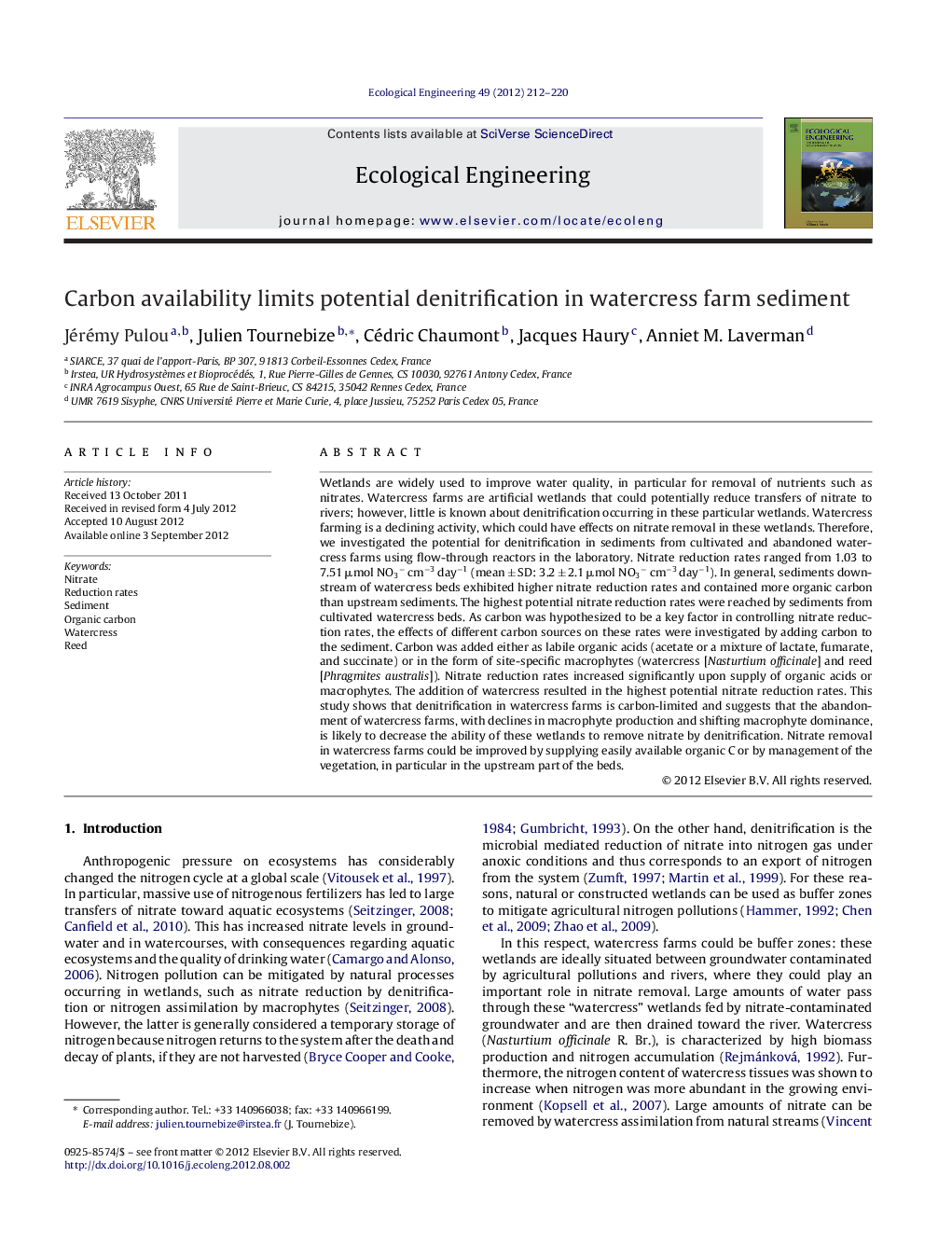| Article ID | Journal | Published Year | Pages | File Type |
|---|---|---|---|---|
| 4389906 | Ecological Engineering | 2012 | 9 Pages |
Wetlands are widely used to improve water quality, in particular for removal of nutrients such as nitrates. Watercress farms are artificial wetlands that could potentially reduce transfers of nitrate to rivers; however, little is known about denitrification occurring in these particular wetlands. Watercress farming is a declining activity, which could have effects on nitrate removal in these wetlands. Therefore, we investigated the potential for denitrification in sediments from cultivated and abandoned watercress farms using flow-through reactors in the laboratory. Nitrate reduction rates ranged from 1.03 to 7.51 μmol NO3− cm−3 day−1 (mean ± SD: 3.2 ± 2.1 μmol NO3− cm−3 day−1). In general, sediments downstream of watercress beds exhibited higher nitrate reduction rates and contained more organic carbon than upstream sediments. The highest potential nitrate reduction rates were reached by sediments from cultivated watercress beds. As carbon was hypothesized to be a key factor in controlling nitrate reduction rates, the effects of different carbon sources on these rates were investigated by adding carbon to the sediment. Carbon was added either as labile organic acids (acetate or a mixture of lactate, fumarate, and succinate) or in the form of site-specific macrophytes (watercress [Nasturtium officinale] and reed [Phragmites australis]). Nitrate reduction rates increased significantly upon supply of organic acids or macrophytes. The addition of watercress resulted in the highest potential nitrate reduction rates. This study shows that denitrification in watercress farms is carbon-limited and suggests that the abandonment of watercress farms, with declines in macrophyte production and shifting macrophyte dominance, is likely to decrease the ability of these wetlands to remove nitrate by denitrification. Nitrate removal in watercress farms could be improved by supplying easily available organic C or by management of the vegetation, in particular in the upstream part of the beds.
► Organic carbon availability limits denitrification in watercress farm sediments. ► Watercress provides more available carbon than reed to fuel denitrification. ► Cultivated watercress beds showed higher nitrate removal rates than fallows.
